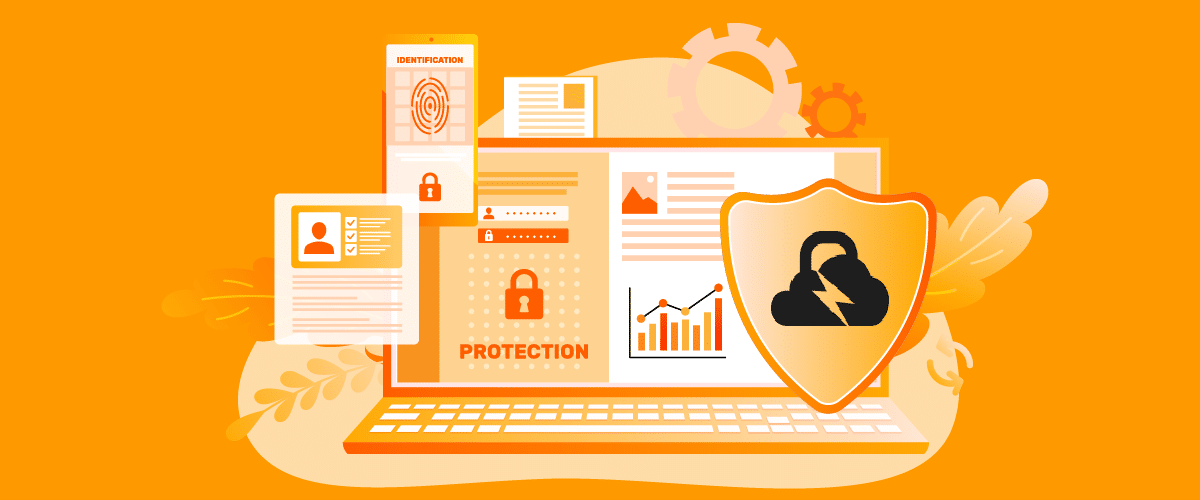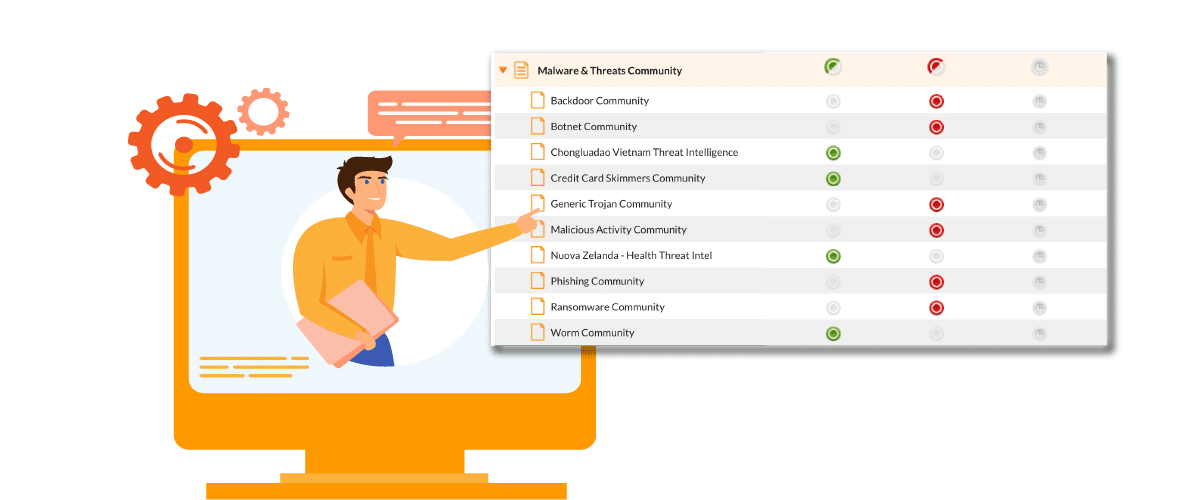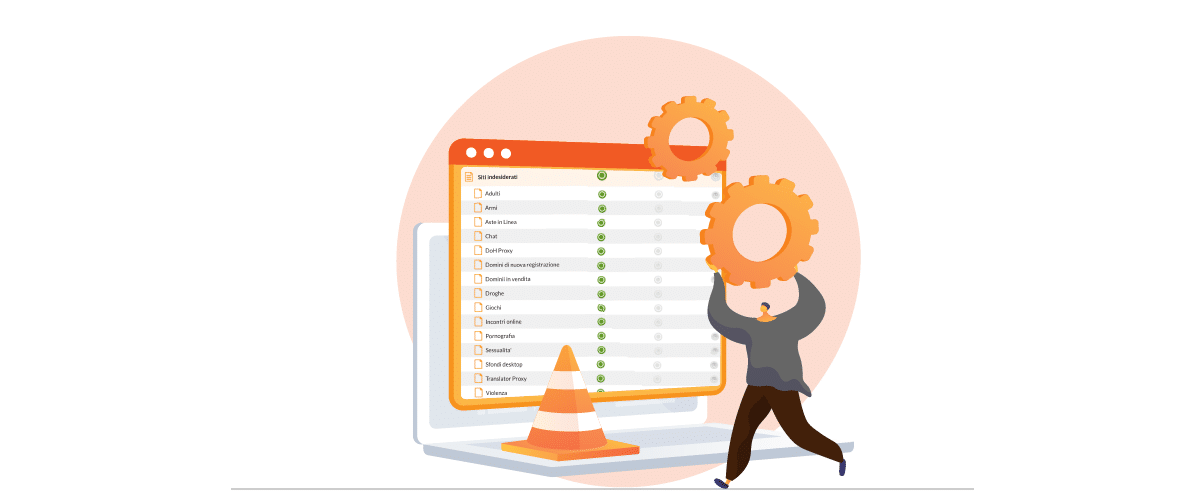
What web protection from the browser means
Browser-based web protection basically means protecting the user while browsing directly from the program being used to do so. It is a protection built into the browser which has both advantages and disadvantages; we will look at them in this article.
1. How web protection from the browser works
The browser, or program for browsing, is available on any computer, smartphone, or tablet. We can install a specific one or use the one we already have. Chrome, Edge, Safari for the Mac world, Firefox, and Opera are the most popular browsers, and all of them have built-in browsing protection.
Web protection from the browser has the distinct task of protecting users during browsing. This means that whenever the user tries to reach a site, before making the connection, the tool that is built into the browser checks to see whether or not the site is “clean,” namely, that the site does not contain dangerous or offensive contents.
For example, it is meant to prevent minors from surfing pornographic sites or sites that glorify violence or disseminate contents which could negatively influence them in some way, and also sites which sell weapons or illegal products. Finally, the goal is to block sites that contain malware, ransomware, spyware, Trojans, and phishing sites.
>> Download here the FlashStart Cyber Security Report ebook about the main threats on the web
The function of these built-in filters is similar in all browsing programs. Consider, as an example, the web protection present in Google Chrome. First, it is necessary to act on the level of protection manually. In the case of Chrome, one goes to the settings privacy and security and reaches a tab with two levels of protection.
Advanced protection, according to Google, is a system of proactive protection from dangerous extensions, websites, and downloads, as well as providing a warning in case of a password breach. The system “takes over” the user’s request, checks URLs against a list of unsafe sites stored in Chrome, and allows or blocks browsing.
This service, of course, involves sending browsing data to Google and protects the user. This means that the user who has been authenticated with a Google account will be protected on all Google services he or she uses, even on different devices, such as Gmail and search, also for images. A lower standard level of protection also exists and, finally, no protection at all.
Microsoft’s approach is slightly different and is extended to the operating system level. What does that mean? Microsoft Defender protects a desktop computer from every malicious threat and url, regardless of where it comes from and how one attempts to reach it. Microsoft Defender is a true, free, modular 360-degree protection service that is customizable and can also be used in corporate settings. Although it is free, according to independent reviews, it is a good security service, and not the best, which is more than a parent may require.
Since browsing by young children is conducted mostly from mobile devices, Google also provides Family Link, an app specifically for parental control. This app monitors all activity on a smartphone or tablet, not just browsing, and, among other things, also allows users to set time limits on usage.

2. The advantages of protection from the web browser
As mentioned, all web protection services from the browser are similar. In contrast to Google’s protection service, however, these do not always protect the authenticated user who is using the services of the same provider (Google with Chrome, Gmail, Google Images for example), but the user, even anonymous users, who are only using the browsing program. In addition, there are several web services, such as YouTube, and others, such as Netflix, that have protection features but only within the service. We also know that dangerous urls can reach the user in different ways: via email, via text message, via chat, for example.
The advantages of a web protection service from the browser are obvious. Parents can have sufficient peace of mind that the child will not run into harmful sites. It is, in short, a good answer to the question “how to block contents that are inappropriate for minors on the web.” In addition, one can rest assured even if a dangerous url is inserted in an sms message or chat, since the click triggers the automatic opening of the browsing program, and, consequently, its protection.
3. The limits of protection from the web browser
These types of tools, however, have some limitations that are important to bear in mind. First, the web protection present in a browsing program is easily configurable, and this means that, as in the case of YouTube or Netflix, it is not too complicated to disable it.
Another limitation is that these services are mostly free. Although they provide acceptable protection in most cases, they cannot compare with DNS filters, for example, in terms of accuracy and quality. A service provided free of charge cannot compete with paid filtering services and is not suitable for businesses, schools, or public administration
>> FlashStart protects you from a wide array of threats and blocks access to malicious sites → Request a quotation or try it now
Web protection services from the browser rely on standard blacklist archives that are not always of good quality or up-to-date. In addition, the algorithms that analyze and block the contents used by these services may not be 100% efficient.
In short, if a tool is free, we cannot expect it to be perfect. Failure to constantly update the algorithms that analyze the words contained in sites, as well as blacklists, results in a high risk of fake blocks, i.e., blocked browsing or a green light to sites that turn out to be malicious when it is too late.
Finally, another obvious limitation of web protection services from the browser is the inability to customize it. In corporate, educational, and public administration settings, one needs to build custom filters. For example, a company may want to block access to social networks or recruitment sites or competitor sites, and this cannot be done with the free tools described.

4. Other tools for browsing protection
In conclusion, with the understanding that web protection tools built into the browser can be useful, especially in home environments, we must remember that there are more valuable filters and services. We are referring to DNS (level) filters, which, without going into too many technicalities, we can safely say are more accurate.
A DNS filter checks the quality of the server which has that address, not falling for the tricks that malicious people can use in masking domain names, web page contents, and changing the path between the request and the site. DNS filtering checks if that server’s address is blacklisted, and the black lists that a professional filter exploits are far more comprehensive and up-to-date than a free, site access, control tool.
>> FlashStart is totally in the cloud and easily activated → Request a quotation or try it now
FlashStart provides DNS filtering solutions available for businesses, schools, and institutions, as well as for home browsing. Also, it is both a powerful and cost-effective alternative. Moreover, the value of the FlashStart solution lies in its ability to analyze all the stops on a path that makes a request to access a site. However, it also has value in using machine learning algorithms to rule out dangerous paths a priori. In addition, FlashStart can constantly monitor and verify DNS records that are encountered along the way.
Capable of filtering about two billion website queries, FlashStart DNS protects the browsing of twenty-five million users every day, is present in more than 150 countries around the world and in about twelve thousand businesses, schools, and public administrations, and is delivered, including as a service, by 700 certified partners.
Let’s summarize the features of the FlashStart DNS Filter.
» Frequent updating of blacklists: FlashStart checks 200 thousand new sites per day.
» Guaranteed low latency (that means the speed between request and access).
» Extensive customization of the solution.
» Ninety categories of malicious sites and geoblocking to isolate dangerous countries.
» Use of artificial intelligence to improve the quality of blacklists and for latency.
» Ease of configuration and management.
» Native integration with Microsoft’s Active Directory to speed up the work of system administrators in schools, institutions, and SMBs.
» Worldwide LAN protection and roaming on end points via Anycast network.
You can activate the FlashStart® Cloud protection on any sort of Router and Firewall to secure desktop and mobile devices and IoT devices on local networks.







